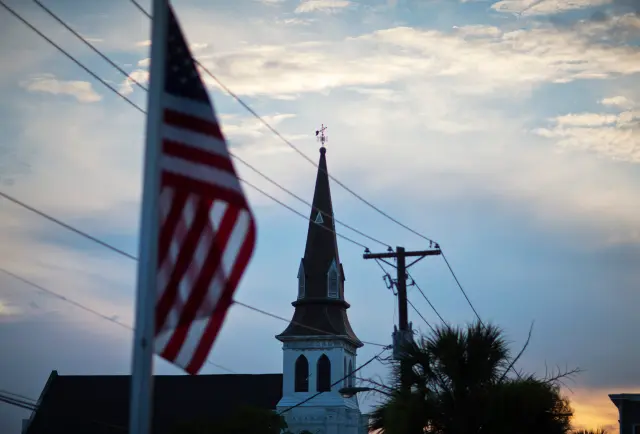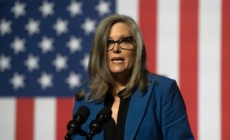-
U.S. Envoy Said to Be Planning to Meet With Senior Hamas Official - 19 mins ago
-
Cody Bellinger Predicted To Betray Yankees For Huge Deal With NL Powerhouse - 25 mins ago
-
EPA Proposing New Pesticide on Crops Raises Alarm - about 1 hour ago
-
Olivia Nuzzi on Her New Book ‘American Canto’ - about 1 hour ago
-
MrBeast Brings Viral Challenges to Life in New Saudi Theme Park - 2 hours ago
-
Zelensky’s Image Is Stained as Corruption Inquiry Shakes His Inner Circle - 2 hours ago
-
Gen Z Could Have One Less Problem When It Comes to Buying a Home - 2 hours ago
-
Stock Market Rally Is Dented as Signs of Worry Emerge - 3 hours ago
-
Republicans’ Chances of Defeating Katie Hobbs in Arizona Governor Race—Poll - 3 hours ago
-
Georgia Official, a Veteran Prosecutor, Appoints Self to Oversee Trump Case - 3 hours ago
US Decline In Religion Among Biggest In World
The United States has experienced one of the largest declines in religiosity globally over the past decade, new research shows.
There has been a 17-percent drop in in the number of U.S. adults who say religion is an important part of their daily life between 2015, when it was 66 percent, and 2025, when it is 49 percent, according to recent Gallup polls.
This is the largest Gallup has recorded in any country over any 10-year period since 2007.
Why It Matters
The U.S. has long been regarded as one of the world’s more religious developed nations, but Gallup’s data shows the country is now drawing closer to the secular norms found in other advanced economies.
This substantial shift reflects profound social and cultural changes, as generational replacement and broader secularization reshape the country’s religious landscape.
What To Know
Gallup’s survey is based on results from the World Poll which questioned people in 160 countries.
The global median for the importance of religion has remained steady at about 81 percent since 2007, and in contrast, the U.S. figure has declined, currently standing at 49 percent. Only 14 out of the 160 countries surveyed experienced a drop of more than 15 percent.
While religion remains more important in daily life for Americans than for many economic peers, the gap has never been narrower in Gallup’s history.
The U.S., as a result, now occupies a unique position—maintaining a medium-high Christian identity with middling religiosity compared to global norms.
This trend aligns with findings from other research. Previous Pew Research Center data shows that Christian disaffiliation, or religious “switching,” is driving the decline.
Only 83 percent of adults raised as Christians still identify as Christian, a lower retention rate than for Muslims or Hindus. Notably, most religious switching results in adults becoming unaffiliated rather than adopting a new faith.
Nationally, just 46 percent of Americans born after 1990 still identify as Christian, and young adults are much more likely to report no religion compared to older generations, according to the Pew Research Center.
But geographic pattern of religious decline is uneven across the U.S. Newsweek has mapped out which states are losing religion the fastest here.
The proportion of non-religious people in America is growing in every U.S. state except South Dakota, Pew data shows.
New Hampshire, Massachusetts, Utah, Wisconsin, Missouri, Montana and Pennsylvania had the largest growth in the proportion of people who identified as “religiously unaffiliated” since the 2007 study.

What People Are Saying
Gallup researchers Benedict Vigers and Julie Ray said in their study: “The long-term decline in religiosity places the U.S. in a unique position on the global religious landscape. Most countries fall into one of four patterns: high religiosity with Christian identity; high religiosity with another religious identity (often Muslim majority, although there are several countries in the Middle East where Gallup does not ask religious identity questions); low religiosity with Christian identity; or low religiosity with no religious identity. The U.S. no longer fits neatly into any of these categories, having a medium-high Christian identity but middling religiosity.”
Yunping Tong, research associate at Pew Research Center said: “The decline is largely due to people shedding their religious identity after having been raised in a religion.”
What Happens Next
While Gallup and Pew data suggest the decline in religiosity may be plateauing after a long period of sustained growth in religious “nones,” the long-term trajectory remains uncertain.
Both researchers and religious leaders will track whether this stabilization persists as younger, less religious cohorts become a larger share of the adult population.
Source link





















